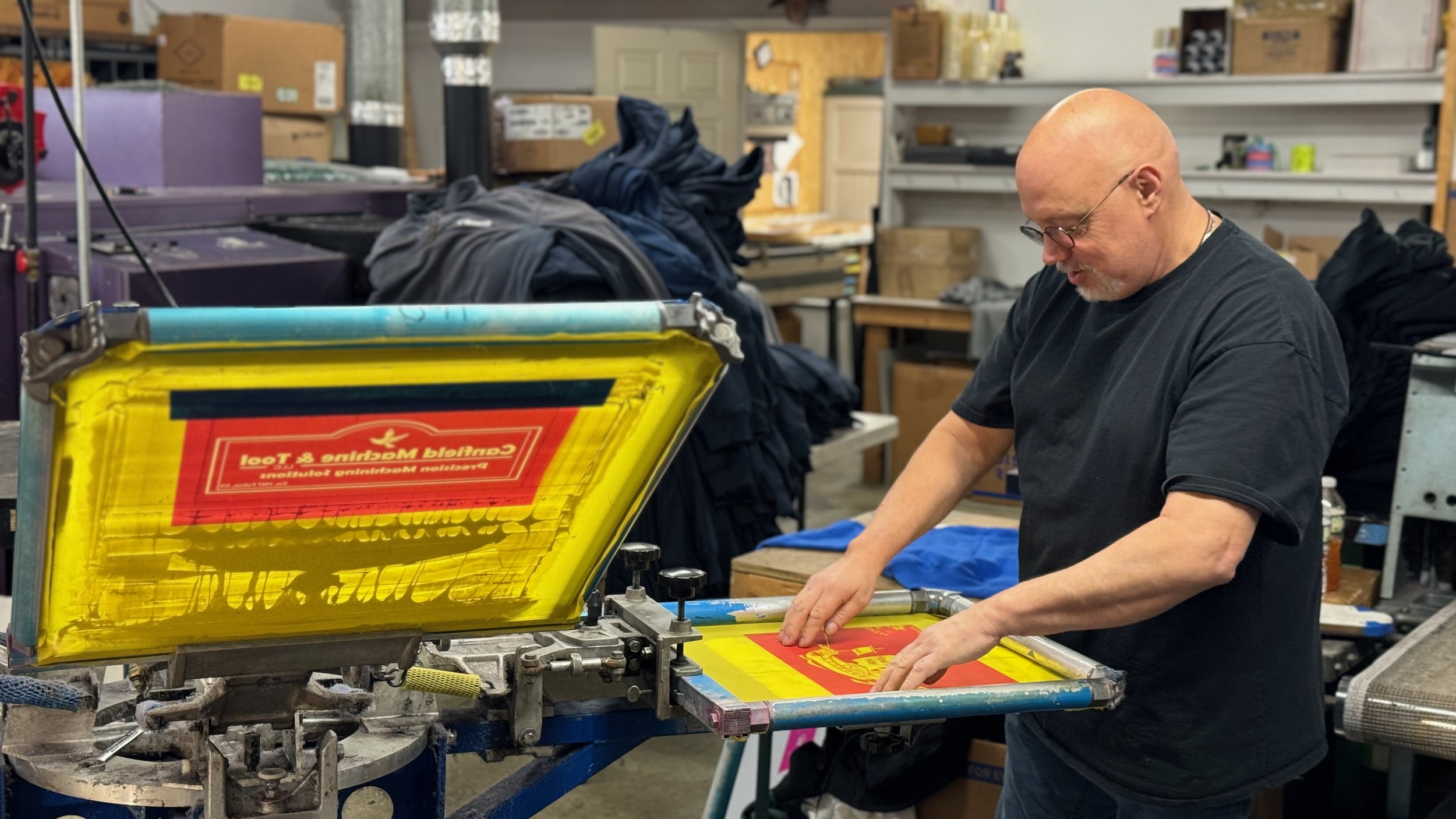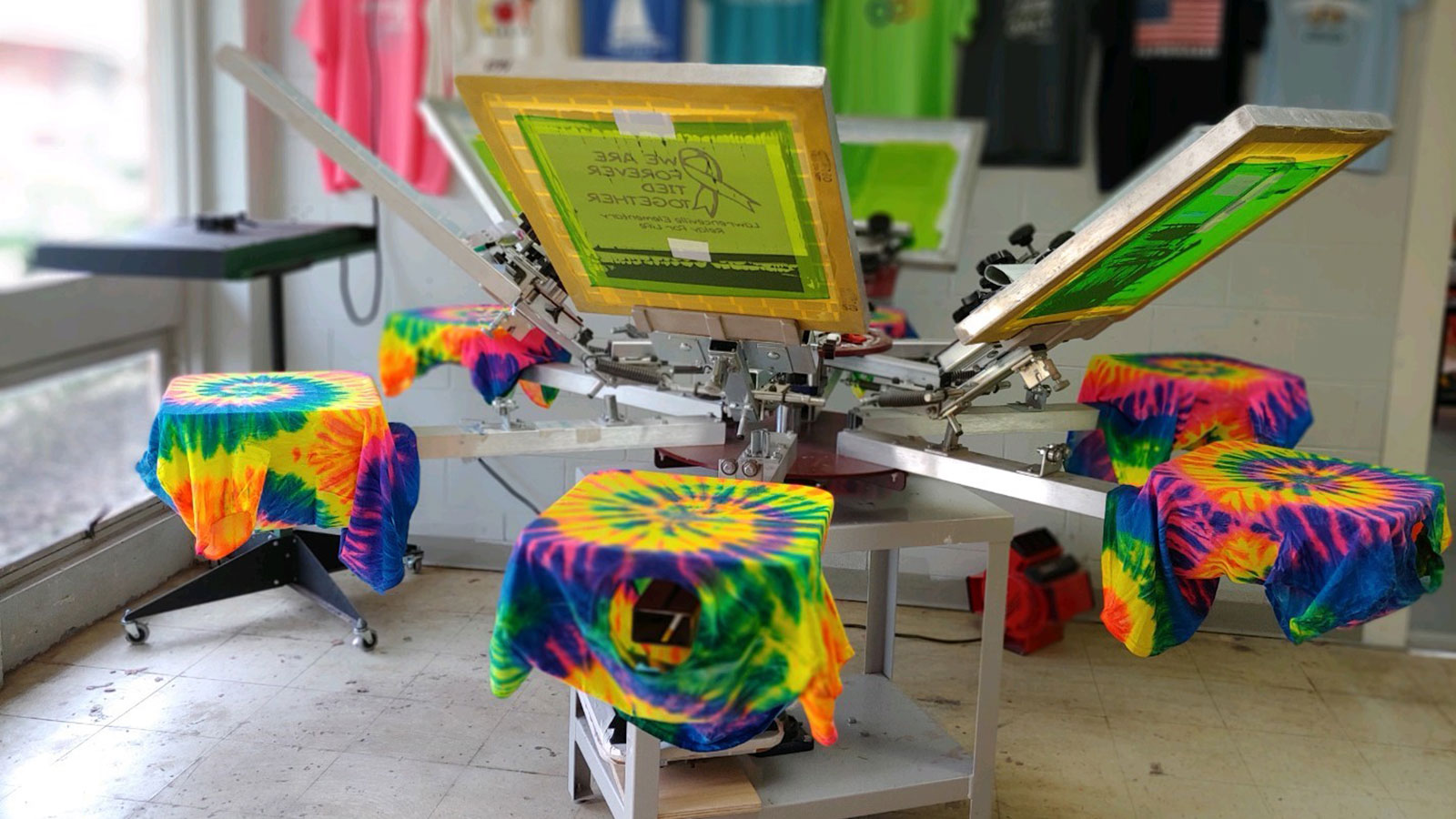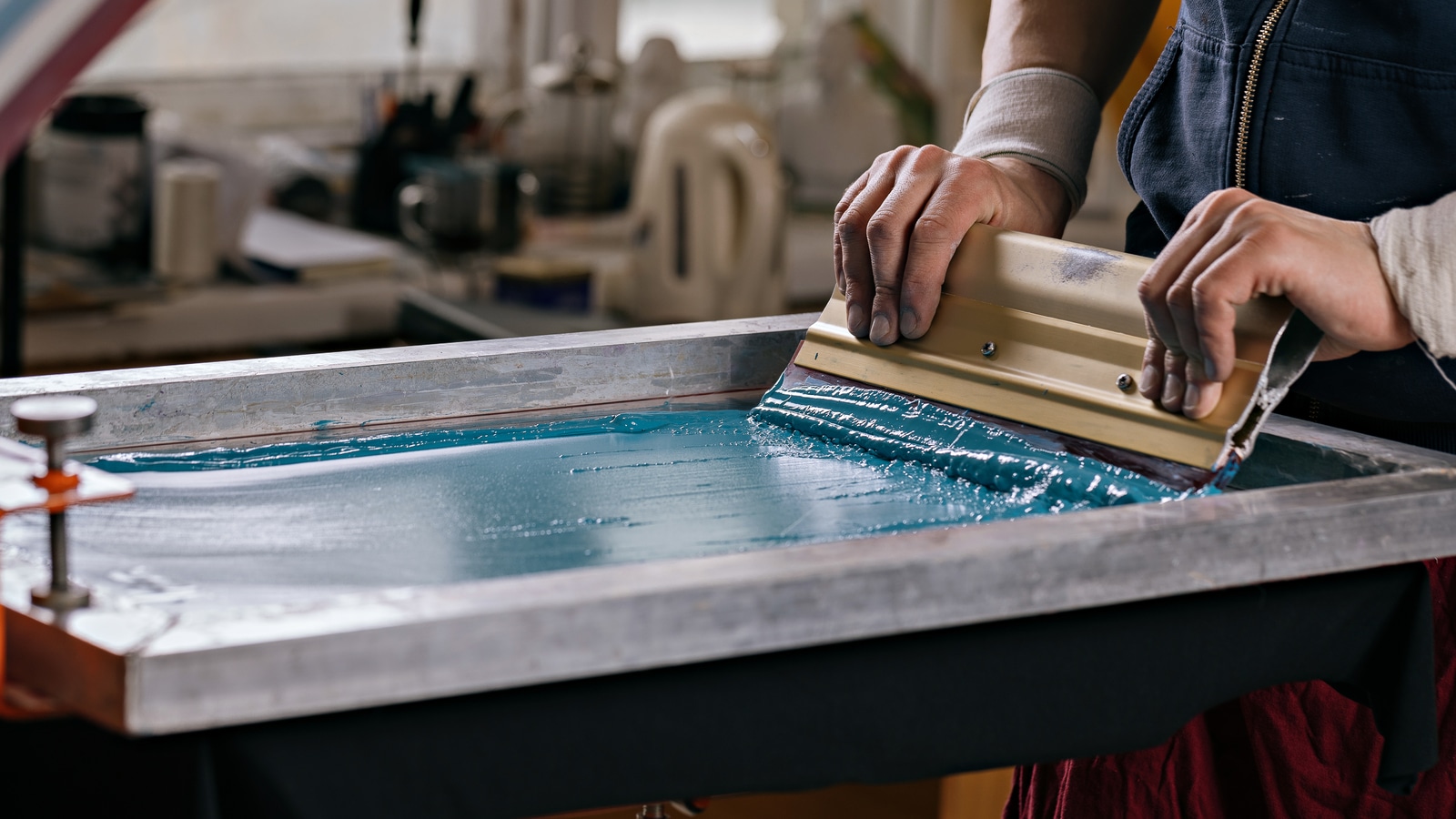Durable T-Shirt Printing for Everyday Wear
Durable T-Shirt Printing for Everyday Wear
Blog Article
Screen Printing Uncovered: Everything You Required to Understand About Tee and Garment Printing Methods
If you've ever before wondered exactly how those dynamic designs finish up on your favored tees, you're in the best location. Screen printing is a remarkable technique that combines art with method, supplying limitless possibilities for creativity. Comprehending the principles, from devices to ink choices, can substantially influence your outcomes. Ready to check out the necessary components that make screen publishing an art form? Allow's discover the details that can elevate your projects.
The Basics of Screen Printing: Exactly How It Functions
When you dive right into display printing, you'll discover it's both an art and a scientific research. At its core, display printing entails developing a pattern, or display, that permits ink to pass with only in specific areas.
Position the screen over the material, after that make use of a squeegee to press ink via the screen onto the garment. Each step is crucial, and mastering them will certainly raise your screen printing skills, changing basic garments right into unique, meaningful pieces.
Sorts Of Screen Printing Strategies
When you comprehend the basics of display printing, it's time to discover the different methods that can elevate your designs. One prominent technique is conventional display printing, where ink is pressed via a stenciled display.
If you're going for fine details, consider discharge printing. This strategy removes color from the fabric, leaving a soft, classic appearance. An additional option is plastisol printing, recognized for its durability and vivid colors, making it a preferred for many brand names. Lastly, explore halftone printing to develop gradient impacts and elaborate styles. Each method has its special appeal, so don't hesitate to try them out to locate what suits your style best!
Essential Equipment for Screen Printing
To accomplish spectacular results in screen printing, having the ideal tools is basic. You'll need a tough screen printing framework, which holds the mesh that moves your design onto the garment. Next off, spend in top notch squeegees; these are necessary for applying ink evenly across the screen.
Picking the Right Inks and Products
When picking inks and materials for screen printing, you need to take into consideration the sort of ink that functions best for your job. Think of fabric compatibility to assure your designs look fantastic and last long. Discover environmentally friendly ink options to make your printing process more lasting.
Kinds of Display Inks
Choosing the appropriate display ink is necessary for achieving vivid, durable prints that fulfill your task's needs. There are a number of kinds of display inks to examine. Specialty inks, such as metal or glow-in-the-dark, can include special results to your layouts.

Fabric Compatibility Considerations
Comprehending material compatibility is important for attaining high-grade display prints, especially since various materials respond uniquely to numerous inks. Constantly evaluate your inks on example textile to ensure they adhere correctly and keep color honesty. In addition, keep in mind that textile weight and texture can impact the final end result, so choosing the ideal ink and product combination is vital for your project's success.
Eco-Friendly Ink Options
Environment-friendly inks are becoming a prominent selection for display printers who intend to lessen their ecological influence while maintaining quality. When selecting inks, take into consideration water-based inks, which are much less harmful and easier to tidy up compared to conventional solvents. These inks bond well with textiles, delivering vibrant results without toxic chemicals. You may additionally explore eco-solvent inks that use fewer unstable organic compounds (VOCs), making them a much safer choice for both your health and the world.
Furthermore, search for inks made from renewable energies, such as soy or vegetable-based choices. By picking the appropriate inks and products, you'll not just create stunning designs yet likewise add to an extra sustainable printing process. Make the switch, and your prints will show your dedication to the atmosphere!
Preparing Your Layout for Screen Printing

File Layout Needs
To guarantee your style looks vivid and sharp on material, you'll require to pay close attention to file style needs for display printing. Make sure your style has a clear history to stop unwanted white sides on your prints. Maintain shade settings in mind; CMYK is typical for screen printing, so convert your RGB designs accordingly.
Color Splitting Up Strategies
Color separation is an essential action in preparing your layout for display printing, and understanding it can substantially enhance your print high quality. You'll require to break your layout into individual shades, as each shade calls for a different screen throughout printing. Start by identifying all the colors in your style and develop layers each. You can utilize software like Adobe Photoshop or Illustrator to separate and separate shades effectively. Be particular to save each layer as a different file, generally in a style like TIFF or PSD. This precision not just assures exact color representation but additionally improves the printing procedure. By taking notice of shade separation, you'll accomplish professional and dynamic cause your screen-printed garments.
Resolution and Size
Attaining the most effective lead to screen printing begins with ensuring your layout has the best resolution and size. Ideally, your artwork needs to be at the very least 300 DPI (dots per inch) for sharp, clear prints. Your last item could look pixelated and unprofessional. if you use lower resolution.
When it comes to size, consider the dimensions of your print location. Design your art work to match the last print size, preferably creating it in the actual measurements you'll be publishing. By doing this, you'll avoid any type of unforeseen scaling concerns.
Constantly check your style in both vector and raster formats. Vector graphics can be scaled without losing quality, making them suitable for screen printing. Preparing appropriately will assure your style looks fantastic on every garment!
Step-by-Step Screen Printing Process
Screen printing is a dynamic process that enables you to develop lively designs on different surfaces. To obtain begun, you'll require a display, emulsion, and your picked ink. Initially, prepare your display by cleaning it extensively. Next off, use the emulsion equally and allow it completely dry in a dark location. When dry, subject your screen to light with your layout put on it, which will solidify the solution where the light hits, producing a stencil - screen printing kit.
After rinsing the unexposed solution, your screen is all set. Establish it up Our site on your printing surface and straighten your garment underneath it. Pour ink onto the display and utilize a squeegee to press the ink through the stencil onto the material. Raise the display meticulously and let the print completely dry. Cure the ink making use of warmth to ensure sturdiness. That's it! You've efficiently display printed your layout.
Tips for Successful Screen Printing Projects
While you're diving right into your screen printing projects, keep in mind that preparation is essential to success. Beginning by collecting all your products-- inks, displays, mops, and garments. A clean workspace assists stop undesirable mistakes, so clean up prior to you begin.
Next, validate your art work is high-resolution and properly sized for your garment. Examine your screen for proper exposure and clean it extensively to avoid smudges. When mixing your inks, follow the producer's standards to accomplish the right uniformity.
Throughout printing, apply also stress with your squeegee for consistent results. Do not hurry; take your time to confirm each print fulfills your criteria. After see page printing, allow your garments completely dry totally before managing or packaging them.
Last but not least, constantly keep an example of your help future recommendation. In this manner, you can examine your progress and boost your techniques over time. Happy printing!

Regularly Asked Concerns
How much time Does It Take to Set up a Display Printing Job?
Establishing up a screen printing task commonly takes about half an hour to an hour. You'll prepare the displays, mix inks, and readjust journalism. The moment varies based upon intricacy and experience, so stay organized!
Can I Publish on Different Material Keys In Making Use Of the Same Strategy?
Yes, you can print on various textile types using the exact same method, yet you'll need to change your setups and inks. Some materials absorb ink in a different way, so trying out assurances the most effective outcomes for each and every product.
What Are Typical Mistakes to Prevent in Display Printing?
When display printing, avoid usual blunders like using the incorrect ink, ignoring appropriate exposure times, or missing pre-press checks. Always test your configuration and preserve tidy displays to guarantee quality results each time.
Exactly How Can I Appropriately Clean and Keep My Display Printing Devices?
To appropriately tidy and maintain your screen printing devices, you ought to routinely wash screens with appropriate solvents, inspect mops for wear, and guarantee all Look At This devices are saved completely dry and dust-free. Consistency avoids costly repair services and enhances efficiency.
Is Screen Printing Environmentally Friendly Compared to Other Techniques?
Display printing can be more environmentally friendly than various other approaches, particularly if you use eco-conscious materials and water-based inks. By picking sustainable supplies and practices, you minimize waste and minimize your impact on the world.
Display Printing Uncovered: Everything You Need to Know About Tee and Garment Printing Techniques
At its core, display printing involves producing a stencil, or screen, that permits ink to pass via only in details locations. Position the display over the textile, then utilize a squeegee to press ink via the screen onto the garment. One preferred approach is traditional display printing, where ink is pressed via a stenciled screen.When picking inks and products for screen printing, you need to take into account the type of ink that works finest for your task.
Report this page